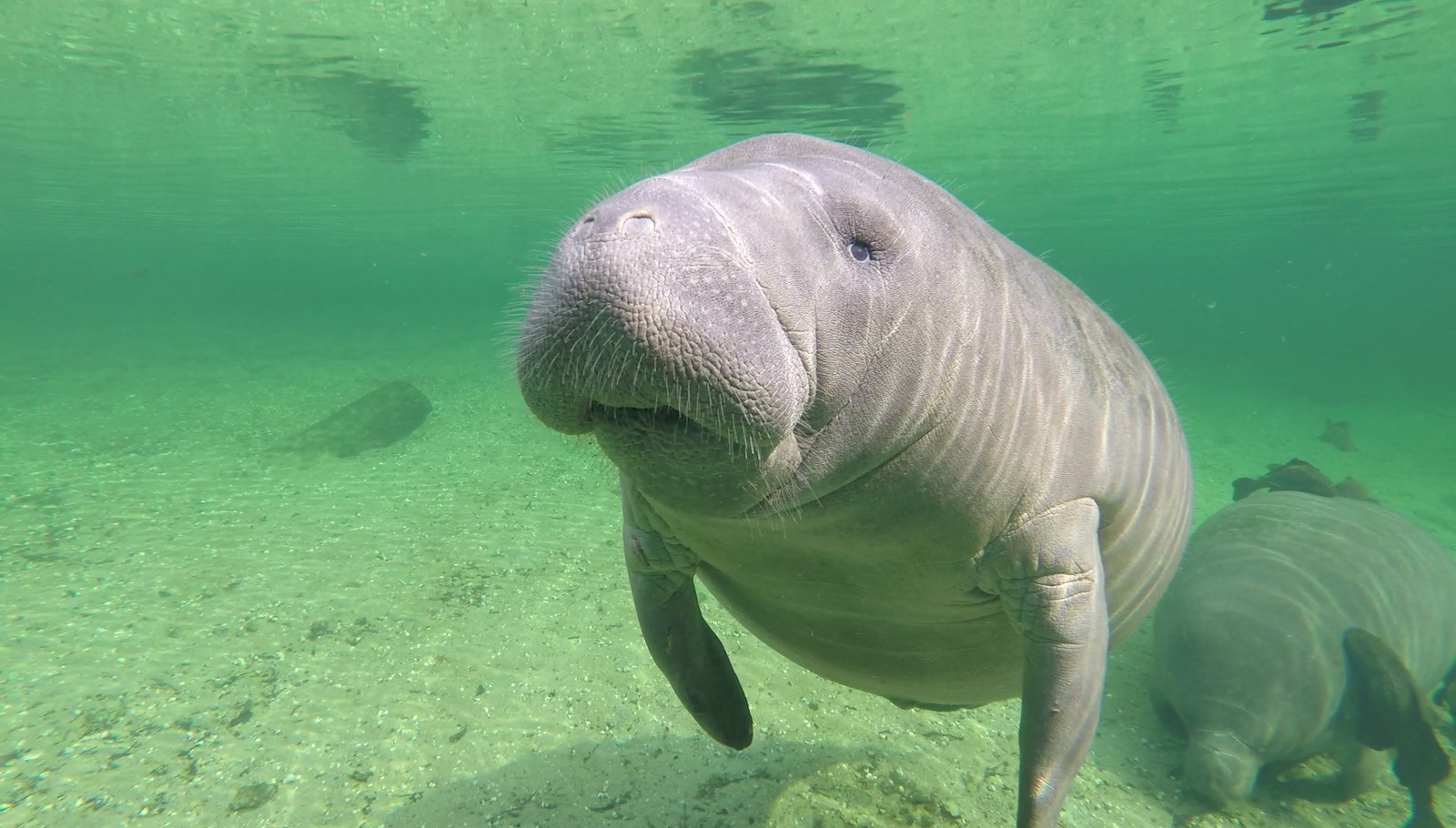
.
.
On an early November morning, a group of employees from the National Park Foundation (NPF), National Park Service (NPS), and partner organizations met at the waters of Blue Spring – a warm-water spring that feeds into the St. John’s River, and known for large gatherings of Florida manatees (Trichechus manatus latirostris), especially during colder months. The shockingly cold day encouraged a considerable number of manatees to seek the warmth of the spring, and the river managers made the wise decision to close the spring to watercraft activity to help give the gentle giants some space as they warmed their whiskers. The sight of a mother manatee and her calf floating leisurely through the spring’s crystal-clear water is one we will never forget, reminding us of the wonder and awe our federally protected species can provide.
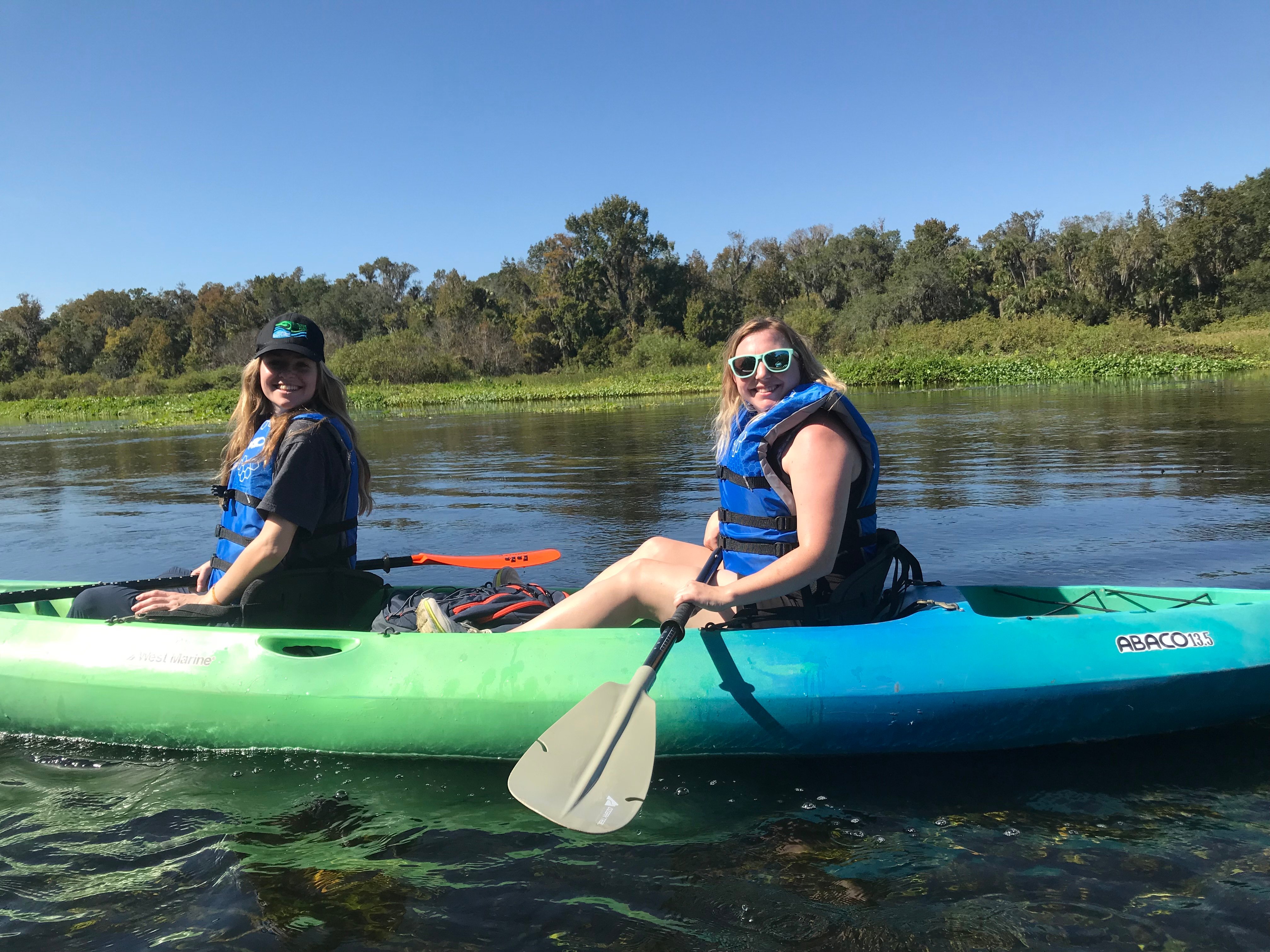
Our group was not just there to catch a glimpse of these unique mammals – we were there to meet with a recent grantee to learn about the important work being done to protect seagrass in the springs of the nearby national Wekiva Wild and Scenic River System.
As part of our $1 million investment in America’s Wild and Scenic Rivers and National Trails, NPF awarded a grant to the Friends of the Wekiva River, NPS, and its partners to support the manatee population through an eelgrass mapping and monitoring project – the first of its kind in the Wekiva River.
The Wekiva River & Manatees

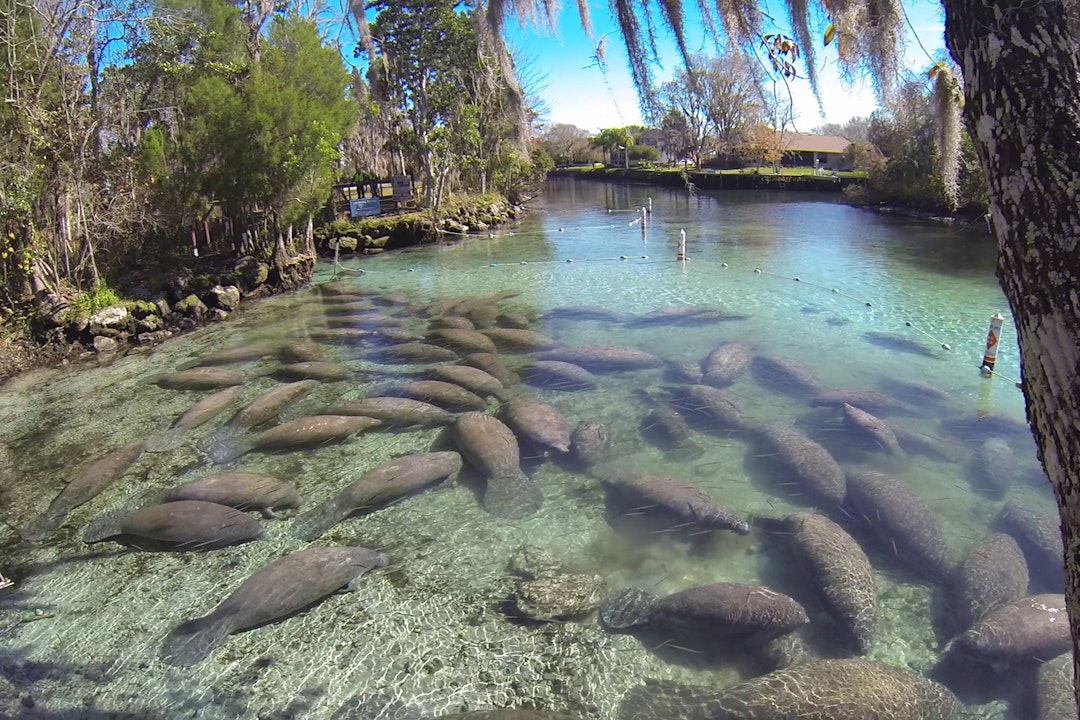
Designated in 2000, the Wekiva Wild and Scenic River System boasts both idyllic views and fantastic recreational opportunities not far from the Orlando metro area. The river basin’s spring-fed streams, lakes, wetlands, and native vegetation provide good water quality, habitat, and vital corridors for at-risk flora and fauna, including the threatened manatees. “Many manatees overwintering at the nearby Blue Spring use the warm waters of the Wekiva River year-round and rely on available food sources in the river,” explains Cora Berchem, Save the Manatee Club’s Director of Multimedia & Manatee Research Associate.
A keystone species, manatees not only indicate a healthy habitat but also help maintain a balanced ecosystem. They prevent overgrowth in rivers and tributaries by grazing on aquatic vegetation and they eat invasive plant species that percolate through the river systems, such as the water hyacinth. They rely on an ample supply of aquatic vegetation – especially eel and sea grasses – and warm water to survive.
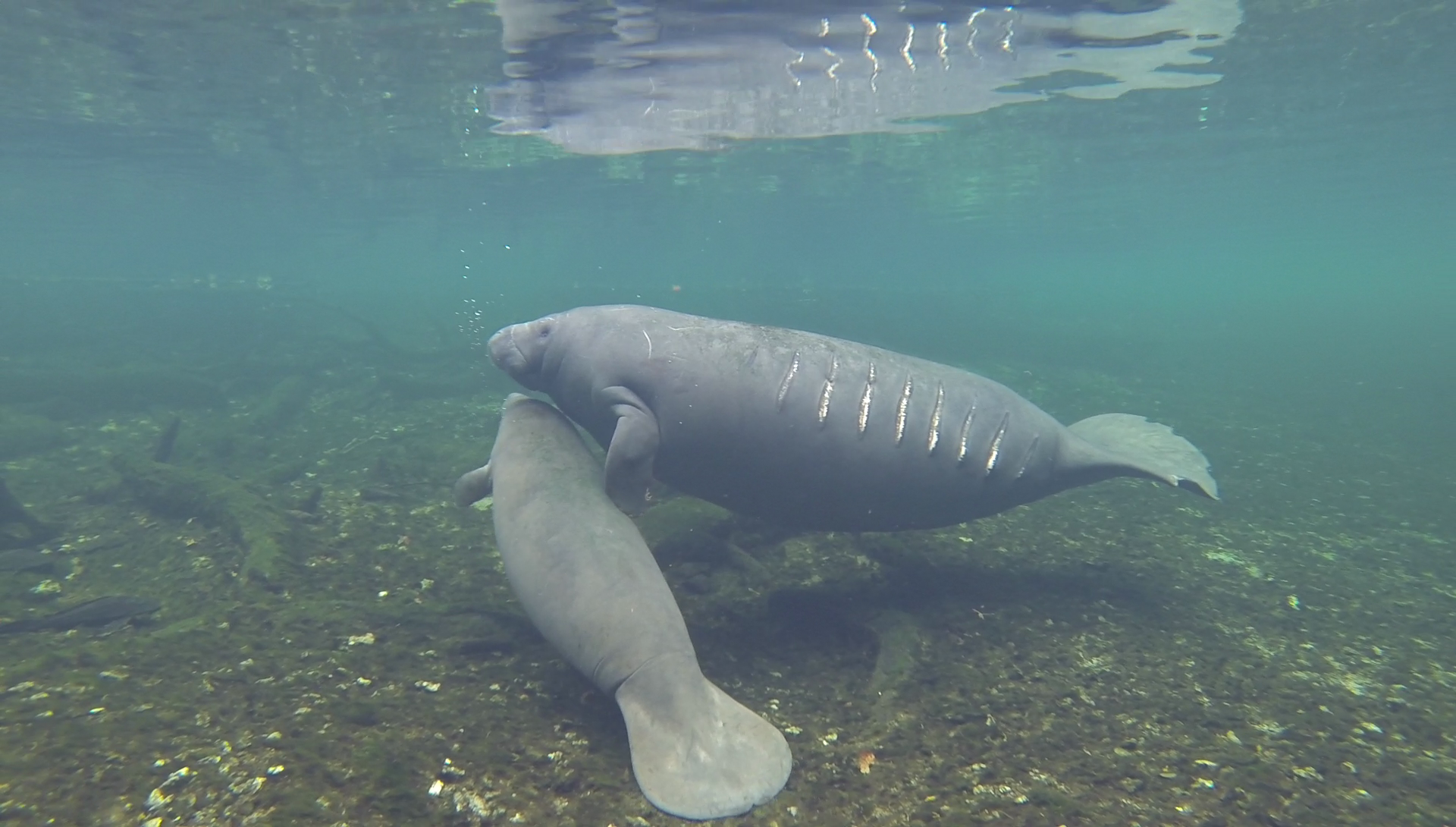
Sadly, a constant influx of natural and human-caused threats and stressors has resulted in a serious decline in manatee populations throughout Florida. The slow and gentle creatures are not able to avoid the sharp propellers of motorized watercraft that speed through their habitat – scientists have noticed many bear life-long scars from the incidents, as well as elevated stress levels, behavioral changes, a loss of mobility, and other serious challenges, including lower birth rates. Many hardworking staff and volunteers are working to institute proactive strategies to avoid such strikes, including educating visitors, enforcing waterway speed limits, and closing off certain areas when high numbers of manatees are spotted – which is what occurred when we happened to visit Blue Spring State Park.
Additionally, algal blooms caused by nutrient pollution and runoff from improperly treated sewage and fertilizers are diminishing water quality – killing off grass beds across the state. In 2021, such blooms led to a massive collapse of more than 90 percent of the seagrass beds in the Indian River Lagoon, a 156-mile estuary, south of the Wekiva River along Florida’s Atlantic coast. During the winter months, hundreds of manatees seeking refuge in the warm water outflow of nearby power plants, with diminishing food sources, had to make the tough choice between staying warm or feeding. More than 1,100 manatees perished due to this seagrass bed collapse, and the occurrence was deemed an “unusual mortality event.”
The Eelgrass Project
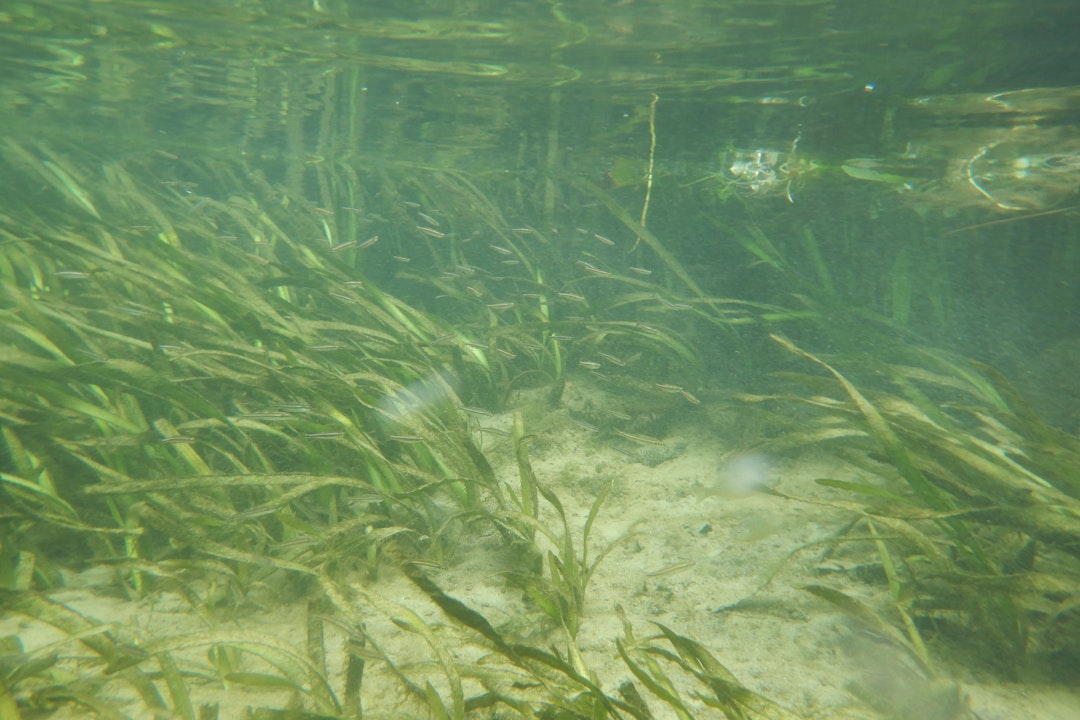
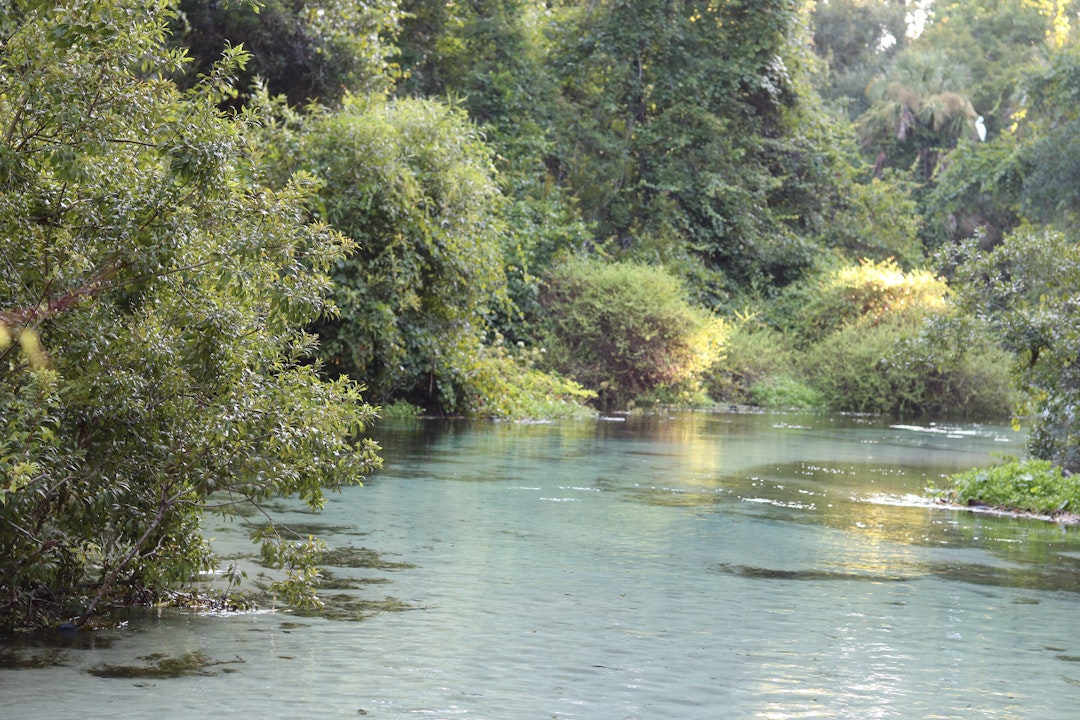
One of the manatees’ favorite food sources is eelgrass (Vallisneria americana), which many additional aquatic species and the ecosystem overall rely on as a habitat and food source. The at-risk Bluenose Shiner (Pteronopris welaka), a tiny minnow found only in certain Florida waterways, swims primarily in and around the stuff! Plus, eelgrass acts as a water filter, improving the water quality by taking up nutrients in the water and making harmful algal blooms less common.
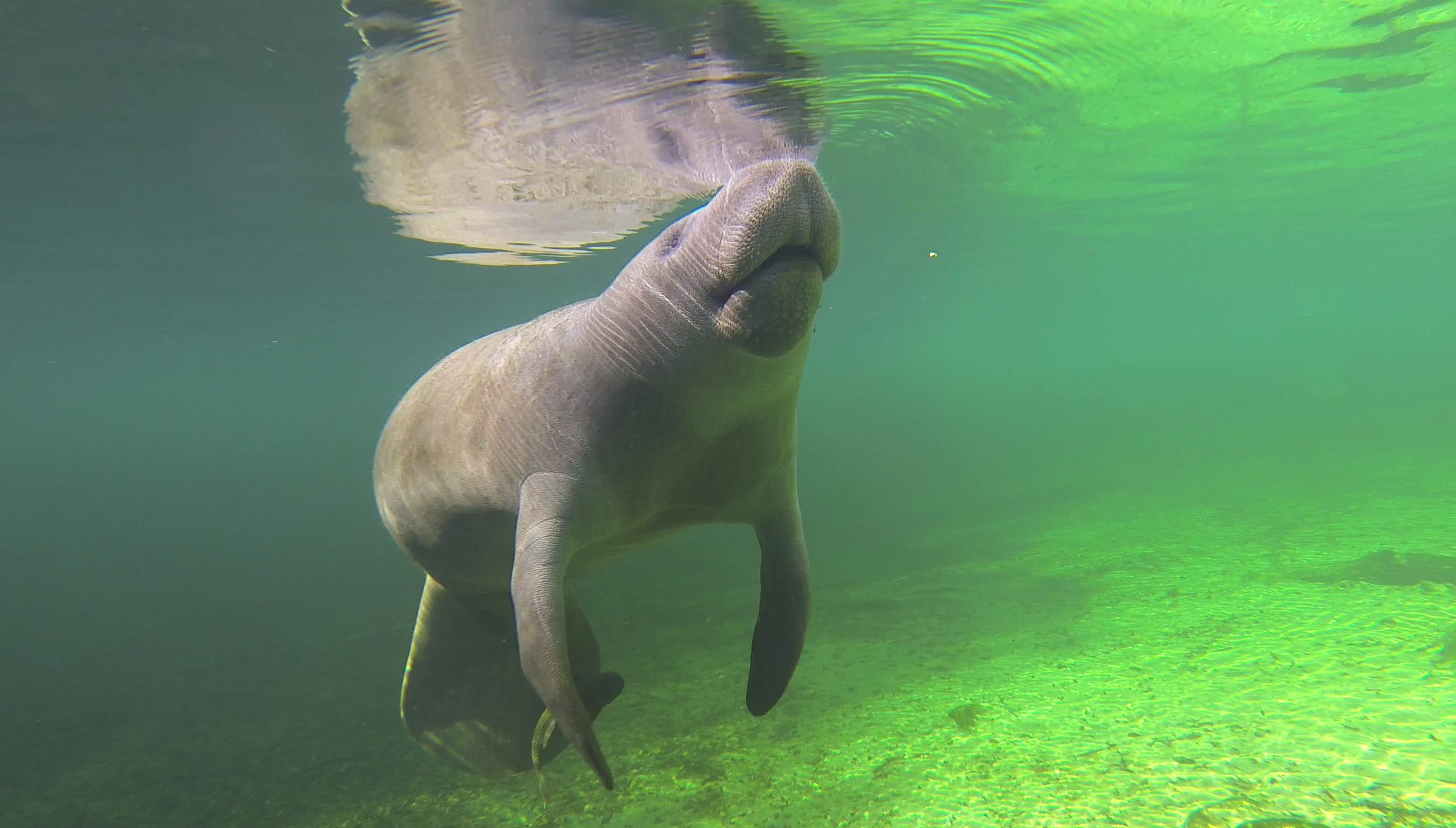
Finding ways to protect and promote eelgrass for manatees, bluenose shiners, and the ecosystem as a whole is paramount. The large-scale eelgrass mapping project supported by NPF will collect and analyze data to produce detailed maps of eelgrass throughout the entire Wekiva River Basin. “It’s of critical importance to understand vegetation coverage and possible changes over time to guarantee adequate habitat for manatees,” says Berchem. Using aerial and ground surveys to assess where the eelgrass is throughout the basin, as well as any gaps in vegetation, the project will develop baseline data that scientists and river partners can continue to reference as they work to ensure the health of the Wekiva River System.
With already low population numbers and the continuous threats of boats, water pollution, and loss of aquatic vegetation, this project is needed now more than ever. The federally threatened Florida manatee, which could be uplisted to an endangered species, is at risk and needs plentiful aquatic vegetation to survive. The proactive nature of this project will help the Wekiva Wild and Scenic River and its partners manage the species’ habitat and ensure they continue to thrive in Florida’s waterways.
Wild & Scenic Rivers and National Trails
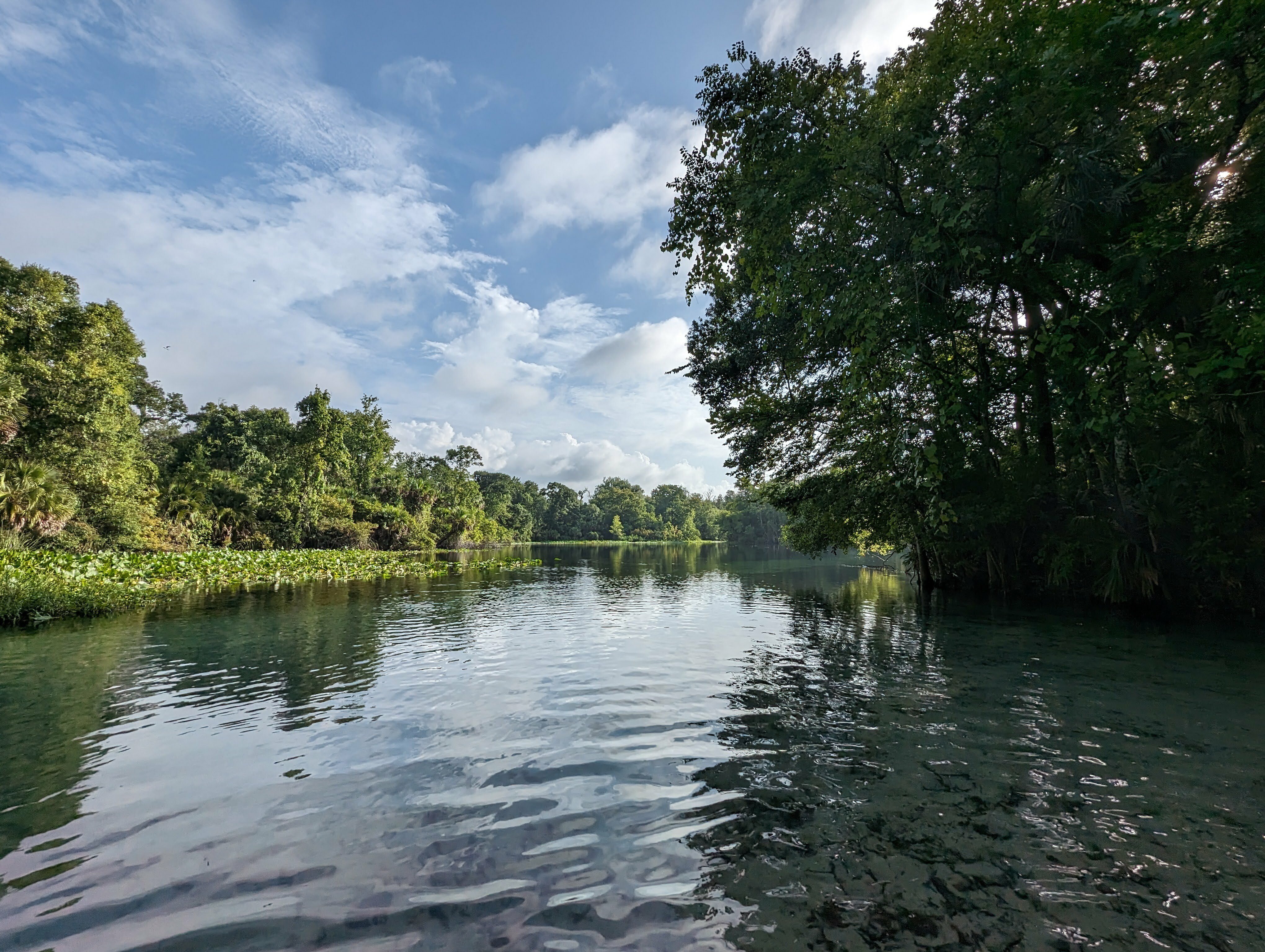
The Wekiva River System is one of over 220 National Wild & Scenic Rivers in the United States, a quarter of which are managed by NPS. That’s quite a lot of area to cover, and significant resources are needed to preserve the historical and natural integrity of these special places. This eelgrass mapping project is just one of many recently awarded grants from NPF that are supporting our nation’s Wild & Scenic Rivers and National Trails. This group of innovative grants – totaling over $1 million in support of priority initiatives – are helping ensure the resilience of these cherished places by accomplishing essential projects and preserving natural places. Working together with a variety of partner organizations, NPF and our partners can make a big impact.